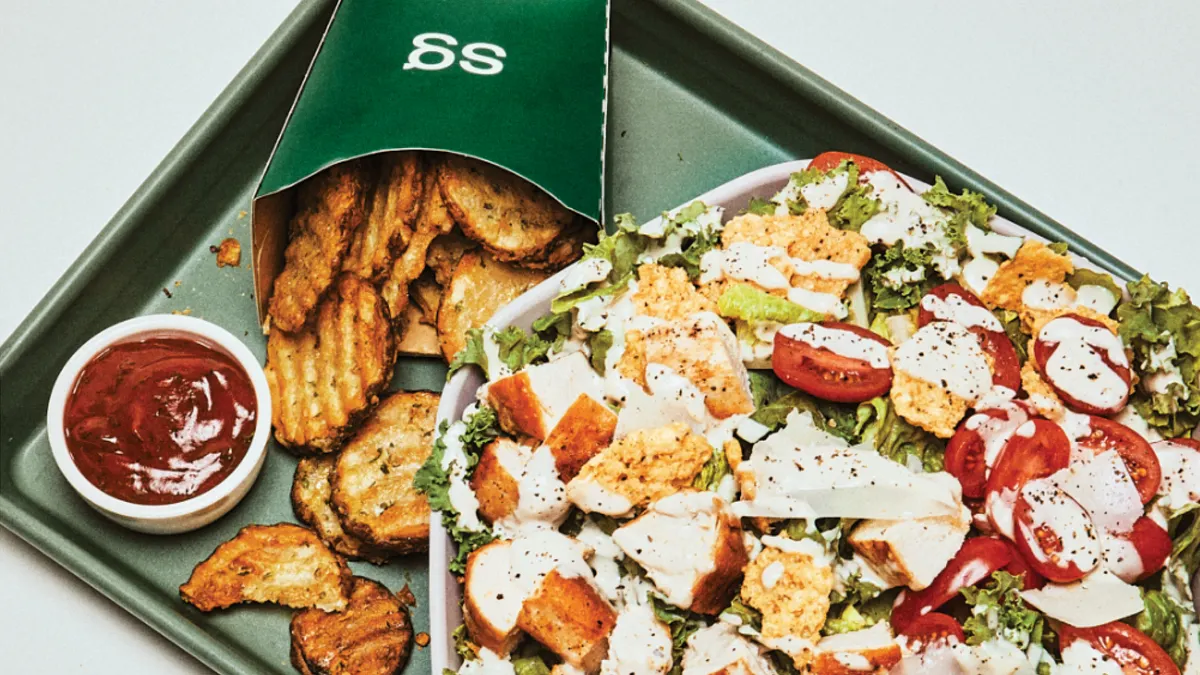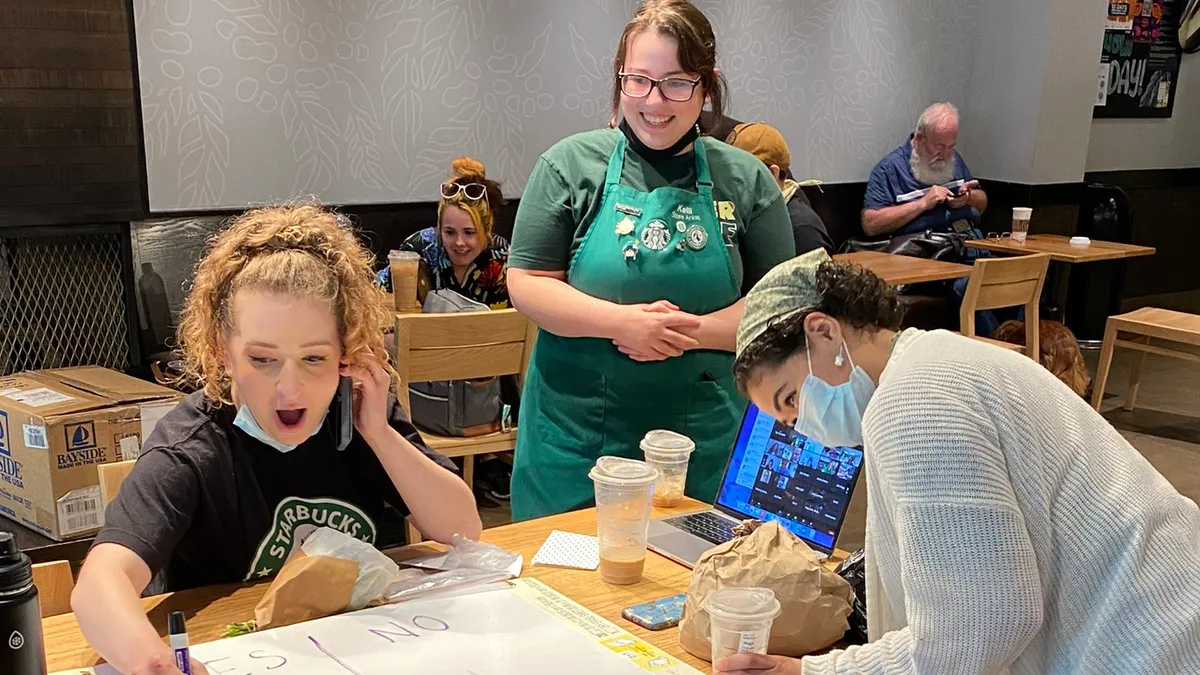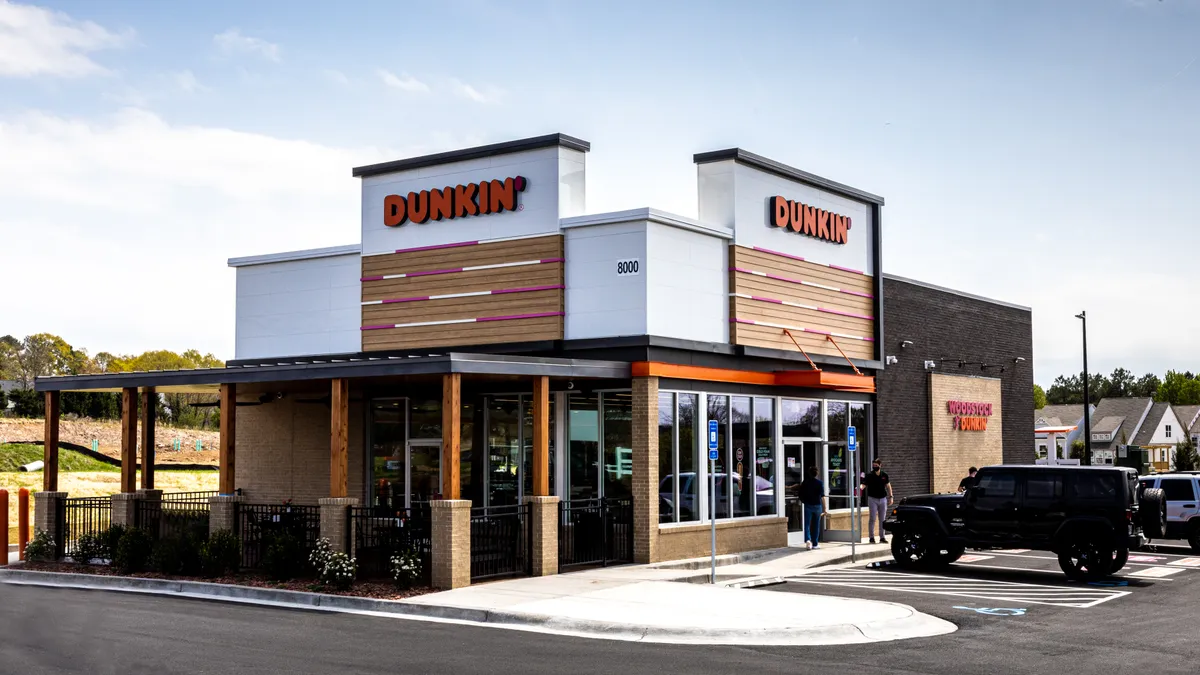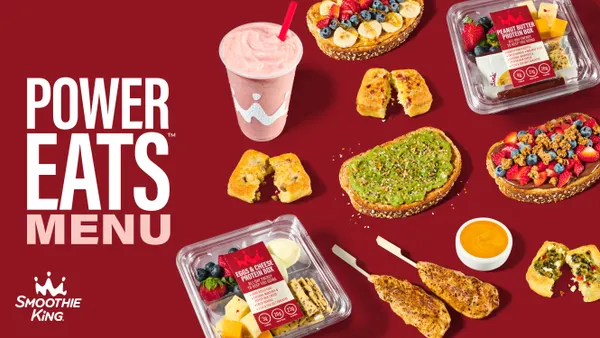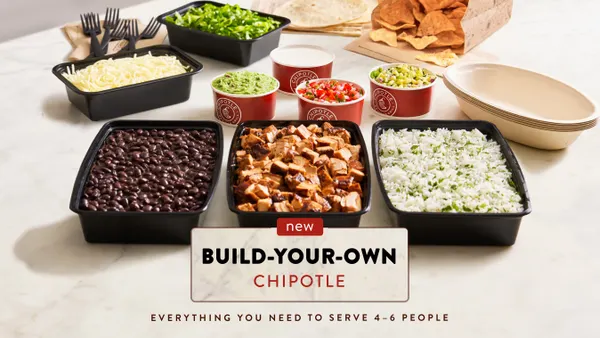Dive Brief:
- The perennially unprofitable Sweetgreen cut 10% of open and existing roles within its support center teams recently, and will drop Ripple Fries from its menu, despite positive consumer feedback, CEO Jonathan Neman said on the chain’s Q2 earnings call.
- Sweetgreen suffered a 7.6% decline in same-store sales for the period, according to its earnings release. CFO Mitch Reback said declining traffic and shifting menu mix caused the equivalent of a 10% decrease, but that this was offset 2.5% by pricing actions.
- Consumer pullback was particularly serious in the salad brand’s core urban markets, Neman said. Sweetgreen is working to improve its value proposition by increasing the size of chicken and tofu portions by about 25%.
Dive Insight:
Sweetgreen’s sales shortfall pushed the chain to downgrade its guidance for full year same-store sales to between -4% and -6%, according to its earnings release.
The brand’s forthcoming efforts like new seasonal menus, marketing around its protein portions and waning negative impacts from its loyalty overhaul — which resulted in lower frequency from former Sweetpass+ members — could help stabilize the brand, William Blair analyst Sharon Zackfia wrote in a research note emailed to Restaurant Dive.
The brand’s profitability problem worsened, with operational losses hitting $26.4 million, or a margin of negative 14.2%. Comparatively, Sweetgreen posted a negative 8.8% operations margin and a $16.2 million loss in the year-ago quarter, according to the earnings release. Reback said the support center layoffs in early Q3 we intended to constrain losses.
Losses were exacerbated by the sales decline, and Neman said many of the chain’s restaurants are underperforming expectations.
“The fundamentals like sourcing, cooking, and throughput are there, but they’re not always delivered with the consistency our guests expect or deserve,” Neman said. “About one-third of our restaurants are consistently operating at or above standard, while the remaining two-thirds represent a meaningful opportunity for improvement.”
One contributing factor to that performance difficulty is actually a successful menu item: Ripple Fries. Neman said the fries — though beloved by some consumers — were hurting Sweetgreen’s ability to prepare its core menu items.
“We studied what it was doing to the restaurant operation and the distraction for our teams, we realized that it became a complexifier for us delivering on our core,” Neman said.
The brand will discontinue the fries next week. Stores where that discontinuation was tested saw overall increases in customer satisfaction as hold times improved, Neman said.
But this is not an abandonment of menu innovation. The brand previously moved away from its seasonal menu cadence, Neman said, to the dismay of consumers. Now it’s returning to the practice, which entails designing, updating and deploying a steady stream of LTOs based on seasonal flavors.
“We have two more seasonal menus slated in 2025 and are planning at least eight seasonal or LTO moments in 2026,” Neman said. Sweetgreen will continue testing new items, like wraps or house-made drinks, but the process for these will have a greater focus on operational integration, rather than just consumer desire for individual items, than in the past.



